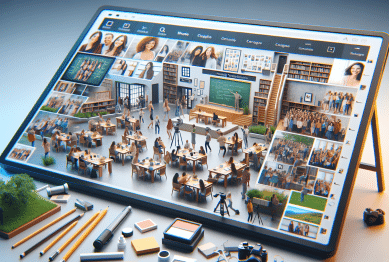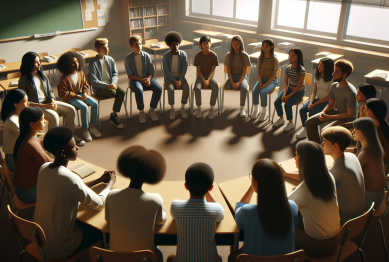In the world of education, there is a growing focus on improving critical thinking and problem-solving abilities. Traditional learning methods emphasize the acquisition of knowledge, but one emerging trend in modern education is the practice of reverse learning—a process that not only helps you learn more effectively but also allows you to spot flaws in your assumptions, strategies, and understanding. Reverse learning is revolutionizing how we think about learning, teaching, and self-improvement. This method encourages individuals to learn by breaking down their existing knowledge and understanding, asking questions, analyzing mistakes, and seeking new solutions.
In this article, we’ll explore how reverse learning works, why it’s essential in today’s fast-paced world, and how to apply it to spot flaws in your learning process. By the end of this article, you’ll be equipped with a practical strategy to improve your decision-making, challenge your assumptions, and grow intellectually.

What is Reverse Learning and How Does It Work?
Reverse learning is a strategy that flips traditional learning on its head. Instead of just absorbing new information and moving forward, reverse learning involves critically reviewing and questioning what you already know. It’s a deliberate process of deconstructing your current understanding to identify errors, gaps, and assumptions. By doing so, you can refine your thinking, improve your problem-solving abilities, and become a more effective learner.
In the context of education, reverse learning challenges students, educators, and professionals to revisit past knowledge and apply it in new, sometimes unconventional ways. It’s about understanding the flaws in your approach and learning from them rather than simply reinforcing existing knowledge.
Why is Reverse Learning a Key Strategy for Spotting Flaws in Education?
The educational system has historically focused on students mastering content in a straightforward, one-directional manner: learn the facts, apply them, and move on to the next subject. While this approach has its merits, it often overlooks a crucial aspect of deep learning—the ability to critically evaluate and improve existing knowledge. This is where reverse learning shines.
Here are a few key reasons why reverse learning is so important in today’s education system:
1. Improve Your Critical Thinking with Reverse Learning
Reverse learning fosters critical thinking by encouraging students to evaluate their assumptions and identify weaknesses in their understanding. By questioning their knowledge and actively seeking flaws, students become more adept at evaluating ideas, solving complex problems, and making better decisions.
2. Reverse Learning Promotes a Deeper Understanding of Concepts
Rather than just memorizing facts or repeating methods, reverse learning pushes students to engage deeply with the material. They reflect on their learning, spot patterns, and discover insights that they might otherwise overlook. This deep engagement leads to a more thorough understanding of the topic.
3. Adapt and Evolve Your Knowledge with Reverse Learning
Reverse learning helps individuals adapt more effectively to new or conflicting information. When presented with new facts, instead of discarding or ignoring them, reverse learning allows learners to reconsider their previous knowledge and adjust their understanding accordingly.
4. Reverse Learning: The Path to Lifelong Learning
In a rapidly changing world, the ability to continuously learn and adapt is essential. Reverse learning fosters a mindset of continuous improvement, making it a valuable skill for lifelong learners who wish to stay relevant in an ever-evolving world.
How to Spot Flaws Using Reverse Learning
The core idea behind reverse learning is to look at what you know with a critical eye. This process of reflection and analysis can reveal key flaws in your thinking and help you spot areas where your understanding may be lacking or where your methods may be ineffective.
Here’s how reverse learning helps you spot flaws:
1. Analyze Mistakes to Identify Knowledge Gaps
One of the most effective ways to learn is by analyzing mistakes. Reverse learning encourages students to revisit errors they’ve made, examine why things didn’t go as planned, and identify areas of improvement. By reflecting on mistakes, you gain a better understanding of where your approach went wrong and how to avoid similar issues in the future.
2. Spot Flaws by Identifying and Questioning Assumptions
We all make assumptions when approaching new tasks or problems. Reverse learning helps you identify and question these assumptions, uncovering any biases or blind spots that might be limiting your thinking. For example, in a business context, reverse learning could help spot a flaw in a business strategy by recognizing an incorrect assumption about consumer behavior.
3. Reverse Learning: A Strategy for Exploring Alternative Solutions
In traditional learning, we often rely on standard methods and solutions. Reverse learning encourages thinking outside the box by revisiting a problem and considering unconventional solutions. This approach helps spot flaws in traditional methods by pushing the boundaries of how we solve problems.
4. Boost Problem-Solving with Reverse Learning to Correct Mistakes
By consistently applying reverse learning, you develop better problem-solving skills. You’ll be able to quickly identify flaws in your initial solutions, reframe your understanding of the problem, and find more effective ways to approach it. This iterative process of trial, error, and reflection sharpens your ability to tackle complex challenges.
How to Implement Reverse Learning to Spot Flaws
If you’re eager to start using reverse learning in your educational or professional life, here are some practical steps you can follow to apply the strategy effectively.
1. Review Your Work Critically to Identify Areas of Improvement
Begin by revisiting a task, assignment, or project you’ve already completed. Instead of just moving forward, take time to review your approach. Ask yourself the following questions:
-
What assumptions did I make when approaching this task?
-
What could I have done differently?
-
What went wrong, and why?
-
What lessons can I take away from this experience?
By critically reviewing your work, you identify areas that need improvement and gain valuable insights for future projects.
2. Question Your Knowledge to Spot Cognitive Biases
Rather than passively accepting information, actively question your knowledge. When learning new concepts, ask:
-
How do I know this is true?
-
Is there another way to interpret this information?
-
What are the flaws in my current understanding?
This questioning mindset helps uncover biases and weaknesses in your learning process.
3. Reconstruct and Deconstruct Ideas to Identify Flaws
When studying a complex subject, try deconstructing the ideas you’ve learned. Break down the concepts into smaller components, and analyze them one by one. Ask yourself:
-
What are the core principles here?
-
How do these principles interact with each other?
-
What parts of my understanding might be incomplete or flawed?
This exercise helps you build a more robust understanding of the material.
4. Reflect on Feedback to Spot Areas for Improvement
Feedback is a critical part of reverse learning. Whether it comes from peers, mentors, or instructors, feedback can help you identify areas of improvement. Take time to reflect on the feedback you receive:
-
What did others notice that I missed?
-
What suggestions do they have for improvement?
-
How can I apply this feedback to improve my future work?
Reflecting on feedback ensures that you learn from both successes and failures.
5. Embrace a Growth Mindset to Spot and Correct Mistakes
Reverse learning is most effective when coupled with a growth mindset—the belief that abilities and intelligence can be developed through dedication and hard work. Embrace challenges, see mistakes as opportunities for growth, and commit to continuous improvement.
Conclusion
Reverse learning is a powerful educational tool that helps individuals spot flaws in their thinking, refine their decision-making process, and engage more deeply with the material they study. By challenging assumptions, analyzing mistakes, and deconstructing knowledge, reverse learning enhances critical thinking, problem-solving skills, and self-awareness. It’s a strategy that encourages both students and professionals to look at learning as a continuous, iterative process of improvement, rather than simply a linear path from one point to the next.
By integrating reverse learning into your educational practices, you’ll be better equipped to tackle complex problems, identify flaws in your strategies, and continuously grow as a learner. Whether you’re a student looking to deepen your understanding or a professional aiming to enhance your decision-making skills, reverse learning is a valuable strategy for intellectual growth and self-improvement.
Reference
- That deep underground savage instinct: narratives of sacrifice and retribution in Agatha Christie’s Appointment with Death’ Textual Practice 34(11) pp. 1803-1821. Available at: https://www.tandfonline.com
- New immunoinformatics tools for swine: designing epitope-driven vaccines predicting vaccine efficacy and making vaccines on demand’ Frontiers in Immunology 11 article number 563362. Available at: https://www.frontiersin.org
- Challenging assumptions about IT skills in higher education’. Journal of Learning Development in Higher Education 6. Available at: https://journal.aldinhe.ac.uk/index.php









